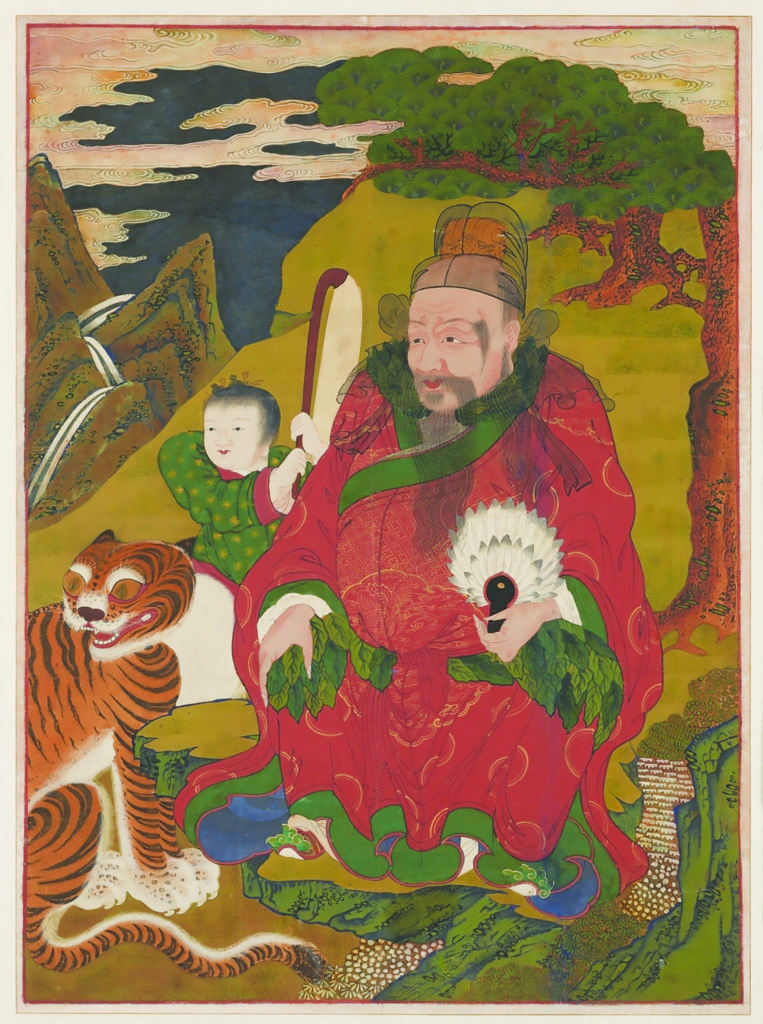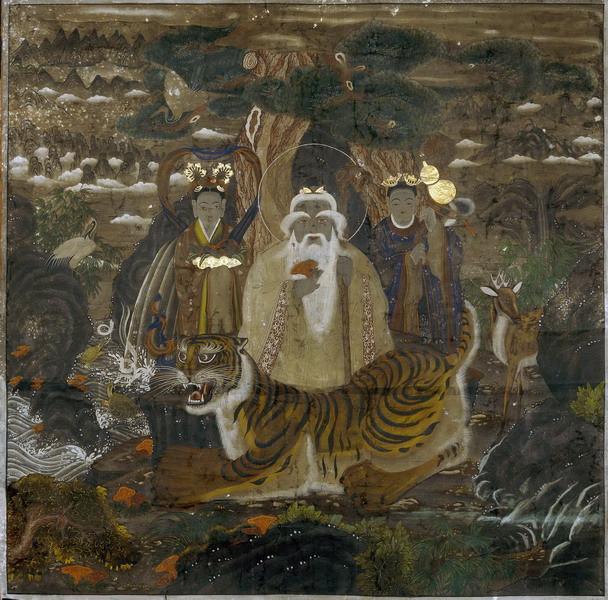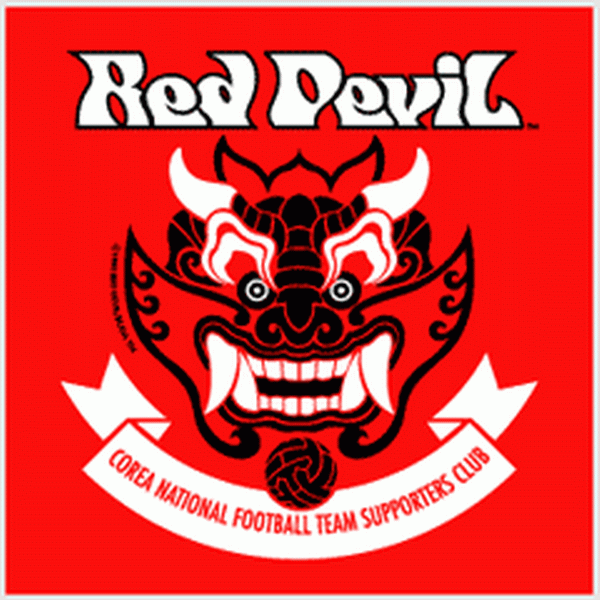The Revered and the Feared: Korea’s Mountain Spirits and Hobgoblins
With Halloween just behind us, this is as apropos a time as any to talk about spirits and the supernatural. There is no dearth of material on the topic of Korean spirits – faith spirits, evil spirits, spirits of the dead, ghosts, hobgoblins, trolls – and here we will uncover two of them: the much revered mountain spirit, Sansin, and the often pesky little hobgoblins, dokkaebi, that can pop up almost anywhere. Stephen Redeker contributed articles on both of these topics to the Gwangju News. “The Hills are Alive with the Sound of…Spirits” appeared in the August 2015 issue and “Here Come the Dokkaebi!” ran in the February 2016 issue. Get ready for the world of the supernatural. — Ed.
The Mountain Spirit, Sansin
The mountains of Korea have always been thought to hold vital energy for the people. Seventy percent of the country is covered with mountains, which the people lived in close proximity to.
The mountains served as protector; they provided food, water, fuel, and building materials; and it was believed that within their peaks dwelled the supernatural. Therefore, it is not surprising that throughout Korea’s long history, worshipping mountain spirits has been a prominent faith practice for many.

This brings us to the topic of shamanism, an ancient system of beliefs in spirits residing in the natural world, which has existed in Korea for thousands of years. There is still a large number of practicing shamans in Korea, intermediaries between the living and the gods of nature (approximately 300,000 by Korea Worshipers Association’s estimate – that is one in every 160 South Koreans!). It is believed that prominent mountains are home to a particular spirit, Sansin, (산신/山神), the mountain spirit who grants blessings and protection to those who worship. Many people have erected, and frequently visit, sacred shrines to worship this spirit of the hills.
Mountain spirits are revered in many parts of the world, but arguably in none more than in Korea. It is the most enduring deity amongst all the country’s faiths. Over time, as Buddhism, Taoism, and neo-Confucianism entered the Korean consciousness, belief in the Sansin has never been repressed. In fact, the belief has bonded with other religions and remains common even today. For example, Buddhist temples often have an image of the Sansin displayed in areas where believers pray and leave offerings.

What does Sansin look like? Images of Sansin can take many forms, as each mountain could have its own Sansin. Since the Joseon Dynasty era, Sansin have typically been depicted in paintings as old men with flowing beards, seated under a gnarled tree next to a tiger, and holding a staff, a fan, or both. Sansin may be surrounded by any number of longevity symbols and disciples. The most famous Sansin of all is Dangun, credited as being the first human ruler of Korea. He became a mountain spirit after ruling his nation for 1,500 years. (See the October 2021 issue of the Gwangju News for more on the Dangun story.)
Surprisingly, not much is written or widely known about Sansin. One reason could be that Korea does not promote this cultural aspect. In a modernized society, many Koreans may think that others will look unfavorably upon this ancient belief. Still others may think that belief in Sansin is all but dead, but surprisingly, one can see this is not the case. Currently, there are about 10,000 shrines scattered throughout South Korea, many of which are new or being renovated, with beautiful statues and paintings.
Korean national pride is ever-present in Sansin, and this mountain spirit represents something uniquely Korean. Korea’s origins, traditional beliefs, and values are closely connected to Sansin. (For more easily accessible information on Sansin, visit Prof. David Mason’s extensive website at san-shin.org.)

Hobgoblins of All Sort
Over time, we have covered spirits, ghosts, and mythological creatures in the pages of the Gwangju News, but now is the time to tell the tale of a particular host of mischievous hobgoblins known as dokkaebi (도깨비). These little beasts are known to strike fear in the hearts of young Korean children, worrying that they might be visited by dokkaebi if they misbehave.
Dokkaebi have been depicted in various ways over time. They can resemble the Western-style goblin or troll: human-like but very ugly and menacing, carrying a spiked club and challenging passers-by for the right to enter or to pass by their space. They may have horns on their heads, big eyes and large, curved, and protruding fangs like a vampire. Their magic hats can grant them invisibility, and they carry their club to strike fear in their opponents. This magical club can also transform objects into anything the dokkaebi desires.
Differing from ghosts and spirits, dokkaebi do not come from the dead. Rather, they arise from nature, as inanimate objects may magically transform into dokkaebi to terrorize unlucky (or perhaps deserving) victims. Thus, Koreans know to avoid graveyards, dark forests, and abandoned buildings unless they welcome the chance to bump into dokkaebi.
Some would consider dokkaebi to be harmless little demons. Their nature is to play jokes and pull pranks on people. They especially love partaking in Korea’s traditional style of wrestling, ssireum (씨름). It is said that dokkaebi like to reward those who do good deeds and punish those who cause harm to others, resembling a Robin Hood type of character. Using their magical paraphernalia, they can take from the rich and greedy, while giving to the poor and worthy.
There are numerous types of dokkaebi with various appearances and agendas. Cham dokkaebi (참도깨비) are very mischievous, while gae dokkaebi (개도깨비) are the evil ones. Gim-seobang dokkaebi (김서방 도깨비) are considered to be like clumsy, simple-minded country bumpkins, nat dokkaebi (낮도깨비) are the only ones to appear in daylight, and go dokkaebi (고도깨비) are skilled warriors with armor and weapons. Also, there are gaksi dokkaebi (각시 도깨비) and chonggak dokkaebi (총각 도깨비), who are, to the human eye, attractive-looking young female and young male hobgoblins. Oenun dokkaebi (외눈 도깨비) have a single cycloptic eye, and oedari dokkaebi (외다리 도깨비) have only one leg, but are most fond of ssireum wrestling.

Dokkaebi come in many more forms, too! Jeokwi (저귀) are dokkaebi who are jealous of children that are loved by their mother, so they give diseases to these children. They are found in old, dilapidated houses. Nati (나티) are dokkaebi who have the form of old household objects, such as brooms, fire irons, mortars, sieves, or even blood-stained canes, and if they are touched by any part of a human’s body, nati can take on human-like form. However, nati are afraid of humans, even though they possess the power to raise mountains!
The list goes on and on. Lantern dokkaebi always travel with their lantern burning, and egg dokkaebi move about by rolling. And then there are the laziest of the hobgoblins: the meongseok dokkaebi, who always carry their sleeping mat with them, and the hot-ibul dokkaebi, who carry their coverlet wherever they go for those spur-of-the-moment slumber times that may come their way.
Although the dokkaebi are strictly Korean folklore characters, their appearances have indeed been influenced by similar monsters, ghosts, and goblins of Chinese and Japanese mythology. The modern similarities between the Korean dokkaebi and Japanese oni may derive somewhat from the colonial period in Korea (1910–1945), but considering the long history of both species of hobgoblins and the influences the two cultures have had on each other over the centuries, their similarities most likely have much deeper roots.
Today, these little fiends can be seen in movies, children’s cartoons, storybooks, and games. Dokkaebi art can also be seen in various museums in Korea. The fans of the Korean national soccer team call themselves the “Red Devils” and use an image of a dokkaebi face as their mascot (Chiwoo Cheonwang, 치우천왕). It is nice to see that such a symbol for mischief can be used in a way to unite people and invoke a sense of national pride.
Now that you are more familiar with dokkaebi, keep your eyes peeled, and you just might meet up with one of them along your path. No need to be startled, though, for if you are a good person, you have nothing to fear (as long as it is one of the good-willed variety of dokkaebi that you encounter).
Original articles by Stephen Redeker.
Supplemented by David Shaffer.




